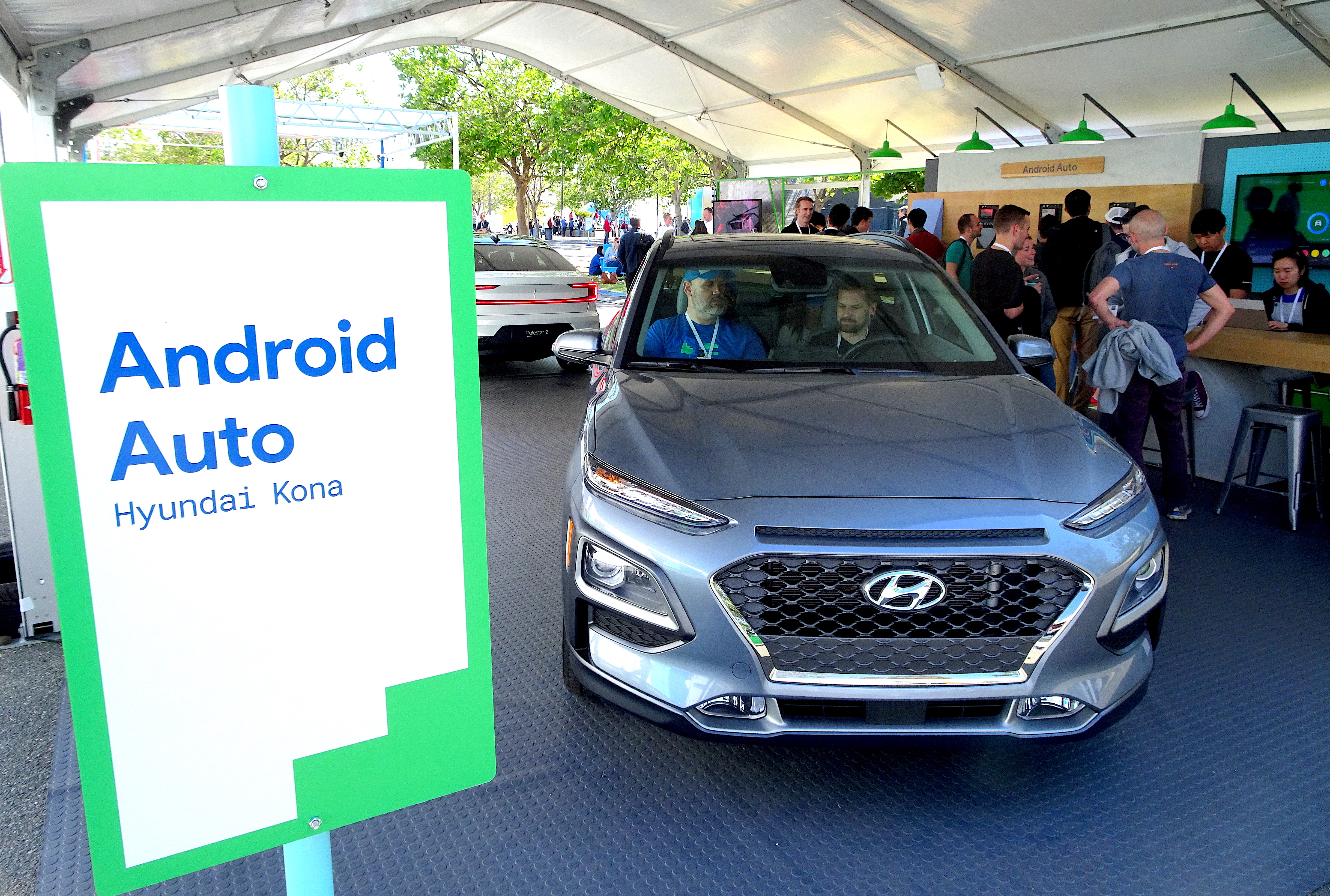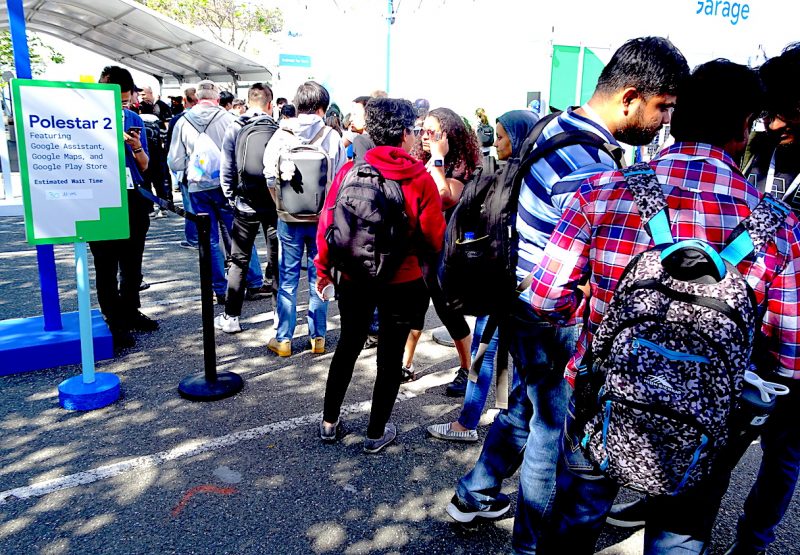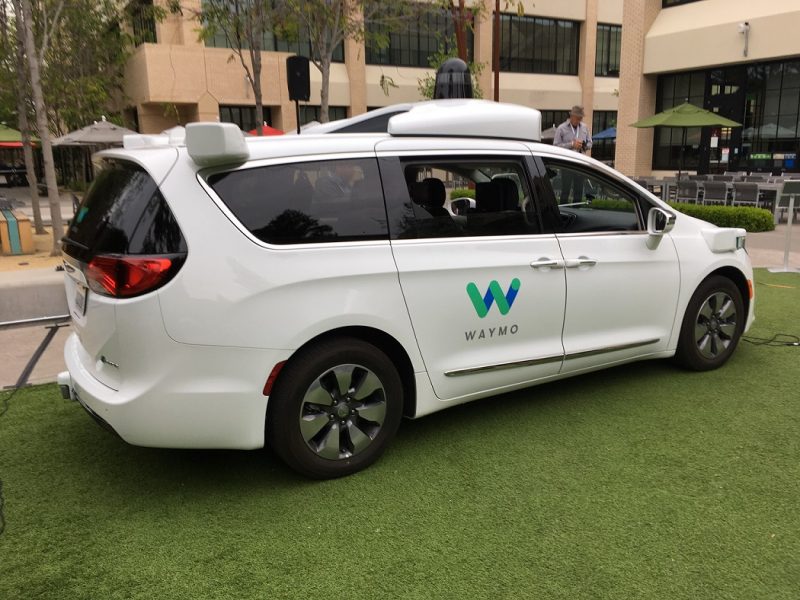 EMERGING TECH
EMERGING TECH
 EMERGING TECH
EMERGING TECH
 EMERGING TECH
EMERGING TECH
In a keynote address at Google I/O 2019 on Tuesday, Alphabet Inc. Chief Executive Sundar Pichai declared that his company’s goal was “to build a more helpful Google for everyone.” One area of daily life where Google LLC clearly has big plans to help: driving a car.
Car technologies, among numerous others, were on full display at Google’s major annual conference in Mountain View, California, this week as software developers from around the world gathered to learn more about the tech giant’s latest platform enhancements.
And those developers are clearly fascinated. A display of various Google automotive efforts drew long lines of people at the conference who wanted to get a close look at how it all works in actual cars. The popular demonstrations included a Hyundai Kona outfitted with Android Auto and various other technologies such as Google Assistant and Maps used in the Polestar 2 electric car (below).
Two years ago, Google introduced Android Automotive OS, software which allows phone apps to operate in car infotainment units. A few days before this week’s big event, Google opened Android Automotive to app developers. The move is an acknowledgment that in creating products for the automotive market, the in-vehicle platform experience needs to be as fresh and dynamic as what users have come to expect from their own smartphones.
 At a Google I/O session on Tuesday, company executives highlighted their expectations that developers will embrace the opportunity to contribute new mapping and communications solutions for the automotive platform. This would be on top of the existing Android Auto framework which already supports different screen sizes and input methods.
At a Google I/O session on Tuesday, company executives highlighted their expectations that developers will embrace the opportunity to contribute new mapping and communications solutions for the automotive platform. This would be on top of the existing Android Auto framework which already supports different screen sizes and input methods.
Google also revealed plans this week to add a “driving mode” to Android Auto via its Assistant platform. The new feature, scheduled for full release this summer, includes a dashboard with favorite contacts and personal recommendations.
“We are on track to have Android Auto in 100 million cars in the next year,” said Mickey Kataria, director of product management at Google. “This hopefully shows you that we are here for the long run.”
Providing software for the in-vehicle experience when the driver is behind the wheel is one thing. Making strides in the technologically complex autonomous car market is quite another.

Waymo LLC, Alphabet’s self-driving technology subsidiary, has been developing its technology since 2009. And its fleet of cars has been on the roads for the last two years, primarily in the Phoenix, Arizona market.
Waymo announced on Tuesday that Lyft riders in the Phoenix area will soon be able to summon one of its self-driving cars to get around town. The news is the next step for Waymo, which has deployed autonomous services to carry 1,000 people to home, work or shopping in the Phoenix area.
“In Phoenix, we are learning what it takes to run a driverless regulated service,” said Dmitri Dolgov, chief technical officer and vice president of engineering at Waymo, during a press conference on Wednesday at the firm’s headquarters in Mountain View. “We’re not building a car, we’re really building a driver.”
Waymo is seeking to claim driverless supremacy in a highly competitive arena where General Motors Corp., Tesla Inc. and Uber Technologies Inc. — which is set to go public in a massive initial offering of stock this week — are also vying to deploy fleets of autonomous vehicles. At a recent Silicon Valley event, Tesla co-founder and CEO Elon Musk declared that his firm’s vehicles would achieve Level 5 autonomy, defined as a driverless car’s ability to operate on any road in any conditions, by 2020. The user simply enters a destination and sits back for the ride.
Asked about Musk’s Level 5 promise, Waymo’s Dolgov declined to comment directly on the remarks. He did offer his own assessment of the highest standard for autonomous driving. “It’s not really clear that even people are capable of Level 5 autonomy,” Dolgov said. “I think that’s a little bit of a red herring, to be honest.”
THANK YOU